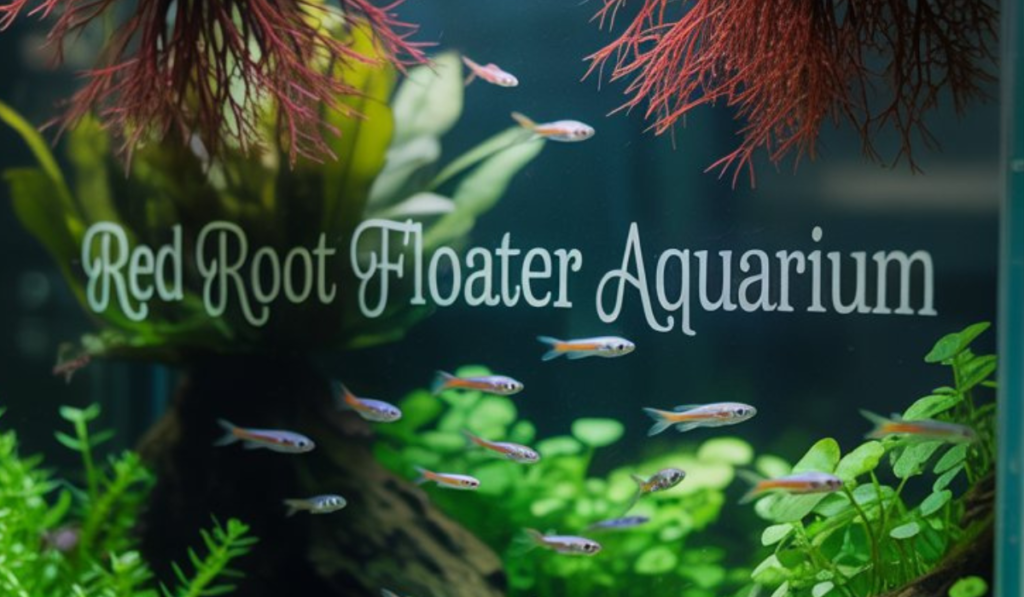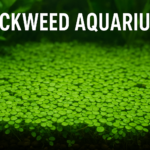Aquarium enthusiasts are always on the lookout for unique plants that not only enhance the aesthetic appeal of their tanks but also improve water quality and provide a natural environment for fish. One such stunning floating plant is the Red Root Floater (Phyllanthus fluitans). Known for its vibrant red roots and floating leaves that turn reddish under high light, this plant has become increasingly popular among aquarists.
In this comprehensive guide, we’ll explore everything you need to know about keeping and maintaining a Red Root Floater aquarium—from care requirements and tank setup to benefits, propagation, and troubleshooting common issues.
What is Red Root Floater?
The Red Root Floater (Phyllanthus fluitans) is a floating aquatic plant native to South America. It belongs to the Phyllanthaceae family and naturally grows in calm freshwater bodies like lakes, ponds, and slow-moving rivers.
This plant gets its name from its striking red-colored roots that dangle gracefully in the water. Its floating leaves can range from green to deep red, depending on the light intensity and nutrient availability.
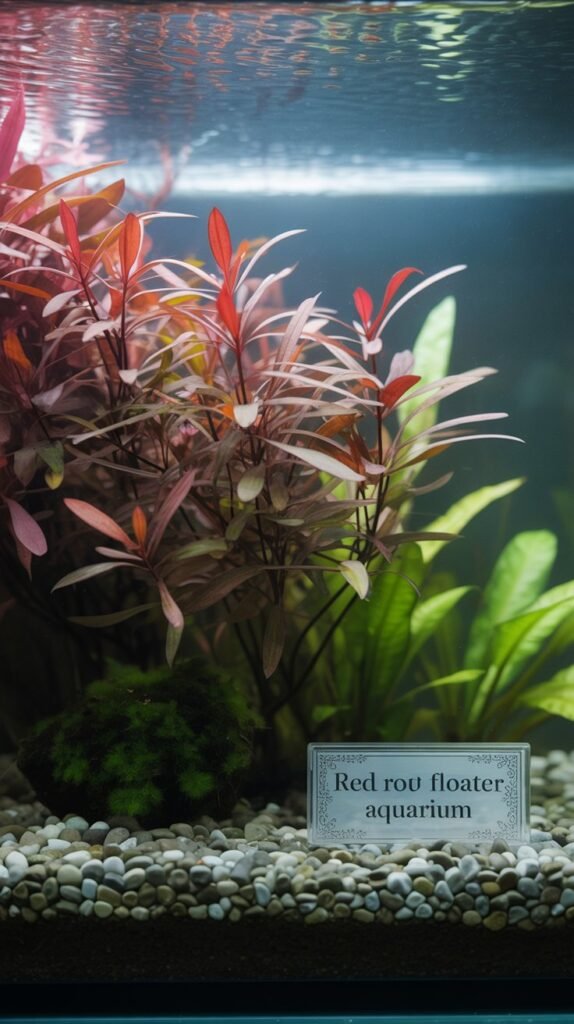
The plant’s delicate appearance is deceiving because it is surprisingly hardy and adaptable, making it suitable for both beginners and experienced aquarists.
Why Choose Red Root Floater for Your Aquarium?
Many aquarists prefer Red Root Floater over other floating plants such as duckweed or frogbit due to its unique characteristics. Here’s why it makes an excellent addition to aquariums:
1. Aesthetic Appeal
The combination of vibrant red roots and reddish-green floating leaves adds a striking visual element to any aquarium. Under strong light, the leaves turn a deep red, creating a natural and colorful canopy.
2. Natural Shade Provider
Red Root Floater forms a floating mat on the water surface, reducing light penetration. This makes it perfect for fish that prefer shaded areas, such as bettas, gouramis, and shrimp.
3. Improves Water Quality
Like many aquatic plants, Red Root Floater absorbs excess nutrients such as nitrates and phosphates. This helps maintain stable water conditions and prevents algae growth.
4. Habitat for Fish and Fry
Its dangling roots provide shelter and hiding spots for fry and small fish, making it a great choice for breeding tanks. Shrimp also love to graze on the biofilm that grows around its roots.
5. Low Maintenance
Compared to many aquatic plants, Red Root Floater is easy to care for. It requires no substrate since it floats, and it grows quickly under the right conditions.
Ideal Aquarium Conditions for Red Root Floater
While Red Root Floater is adaptable, it thrives best under specific conditions. Let’s break down the ideal setup:
1. Tank Size
- Suitable for both nano and large tanks.
- Can be used in aquariums as small as 5 gallons but will spread quickly.
2. Lighting
- Prefers medium to high lighting.
- Higher intensity light enhances its red coloration.
- Low light may keep leaves green instead of red.
3. Water Parameters
- Temperature: 70°F – 82°F (21°C – 28°C)
- pH: 6.0 – 7.5
- Hardness: Soft to moderately hard water
4. Filtration and Water Flow
- Thrives in low water flow environments.
- Strong currents may damage delicate roots or push plants into filter intakes.
5. Nutrients
- Requires iron-rich fertilizers for enhanced red coloration.
- Regular dosing of liquid fertilizers helps maintain healthy growth.
How to Add Red Root Floater to Your Aquarium
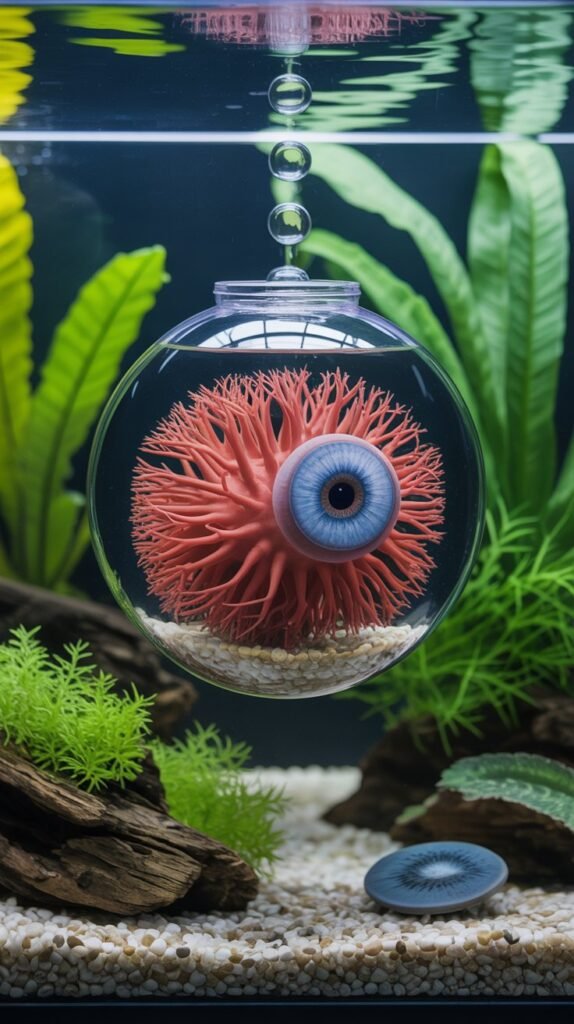
Adding Red Root Floater is straightforward, but a few steps can ensure its smooth introduction:
- Rinse the plant thoroughly before adding to remove any pesticides or contaminants.
- Place it gently on the water surface; avoid submerging leaves.
- Ensure there is enough open surface space for it to spread.
- Keep the aquarium cover slightly open or ensure good air circulation, as it requires access to atmospheric CO₂.
Red Root Floater Care Guide
1. Light Management
- Use LED aquarium lights to provide consistent illumination.
- If the plant becomes pale or green, increase light intensity.
2. Nutrient Supplementation
- Fertilizers rich in iron and micronutrients are essential.
- Avoid over-fertilization, as it can harm fish.
3. Pruning and Thinning
- Red Root Floater grows rapidly and can cover the entire surface.
- Regularly thin out excess growth to prevent oxygen depletion.
4. Water Quality
- Perform regular water changes (20–30% weekly).
- Monitor nitrate levels to avoid imbalances.
Benefits of Red Root Floater in Aquariums
Adding Red Root Floater offers multiple benefits beyond aesthetics:
- Oxygenation: Helps with gas exchange, especially in tanks with gentle surface agitation.
- Algae Control: By competing for nutrients, it reduces algae outbreaks.
- Fish Stress Reduction: Shaded areas make shy or nocturnal species more comfortable.
- Surface Coverage: Prevents evaporation and stabilizes water temperature.
Red Root Floater in Aquascaping
Red Root Floater is often used in aquascaping for its dramatic floating effect and color contrast. It pairs beautifully with:
- Dark substrates (enhances red roots and leaves)
- Vertical driftwood (roots dangle around creating a natural look)
- Low-light plants below (Java Fern, Anubias, Cryptocoryne) since it provides shade
Red Root Floater Propagation
This plant is incredibly easy to propagate.
- Method: Division of existing plants.
- Each floater produces offshoots that can be separated and placed elsewhere in the tank.
- Under optimal conditions, it can double its population within weeks.
Common Problems and Solutions
Even though Red Root Floater is hardy, aquarists may encounter issues:
1. Leaves Turning Yellow
- Cause: Nutrient deficiency, particularly iron.
- Solution: Dose liquid fertilizer regularly.
2. Plant Melting or Dying Off
- Cause: Sudden changes in water parameters or poor acclimation.
- Solution: Gradually adjust tank conditions.
3. Overgrowth
- Cause: Lack of pruning.
- Solution: Thin out regularly to maintain balance.
4. Roots Turning Brown Instead of Red
- Cause: Low light or nutrient imbalance.
- Solution: Increase lighting and provide iron supplements.
Tank Mates Suitable with Red Root Floater
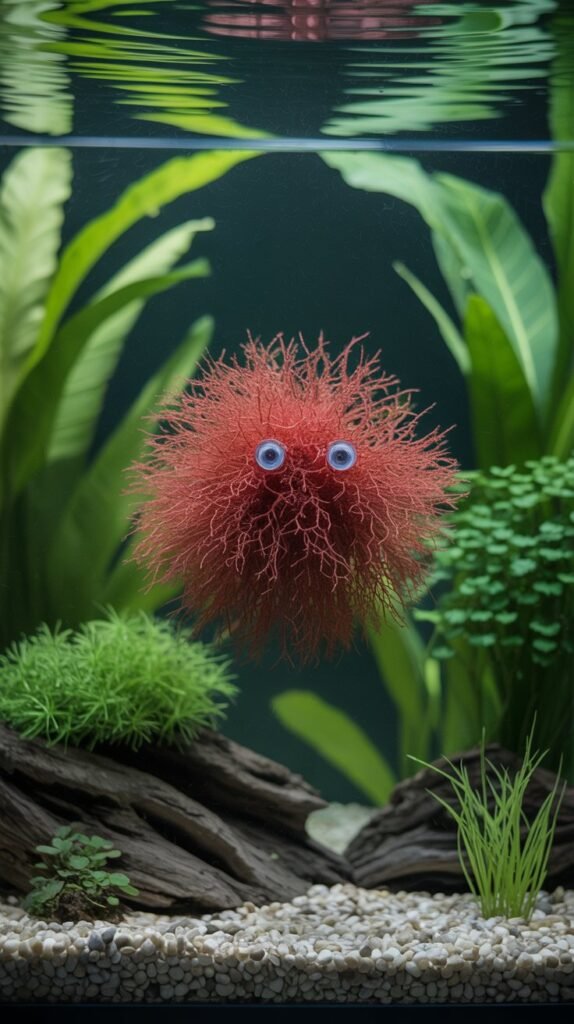
This floating plant is compatible with most freshwater aquarium species. Some ideal tank mates include:
- Betta Fish – Love shaded areas and surface cover.
- Shrimp (Neocaridina, Caridina) – Graze on biofilm around roots.
- Gouramis – Thrive under floating cover.
- Livebearers (Guppies, Mollies, Platies) – Benefit from shaded zones.
- Fry – Find shelter among dangling roots.
Avoid keeping Red Root Floater with:
- Goldfish – They will eat or uproot it.
- Large cichlids – May destroy delicate roots.
Red Root Floater vs Other Floating Plants
| Feature | Red Root Floater | Duckweed | Amazon Frogbit | Salvinia Minima |
|---|---|---|---|---|
| Appearance | Red roots, reddish leaves | Tiny green fronds | Round green leaves with long roots | Oval hairy leaves |
| Growth Rate | Moderate–Fast | Very fast (invasive) | Moderate | Fast |
| Maintenance | Easy, requires pruning | Difficult to control | Needs trimming | Moderate |
| Aesthetic Value | High (unique red coloration) | Low | Medium | Medium |
| Fish Shelter | Excellent | Poor | Good | Good |
Red Root Floater clearly stands out due to its beauty and versatility.
Step-by-Step Guide: Setting Up a Red Root Floater Aquarium
- Choose Tank Size – Minimum 10 gallons recommended for easy maintenance.
- Install Proper Lighting – Medium to high-intensity LED lights.
- Set Up Filtration – Gentle filter with sponge guard to avoid sucking in roots.
- Add Substrate Plants – Use low-light plants below for a layered aquascape.
- Introduce Red Root Floater – Place gently on the water surface.
- Supplement Nutrients – Dose with iron and micronutrients weekly.
- Monitor Growth – Thin out when surface coverage exceeds 50%.
Tips for Thriving Red Root Floater
- Use open-top aquariums or ensure ventilation, as stagnant air may harm leaves.
- Avoid covering the entire tank surface to maintain oxygen exchange.
- Consider floating rings or dividers to control spread and maintain light balance for submerged plants.
- Pair with colorful fish species to highlight its beauty.
Conclusion
The Red Root Floater aquarium plant is more than just an ornamental addition—it’s a functional and beneficial plant that enhances water quality, reduces algae growth, and creates a natural habitat for fish and shrimp. Its unique red roots and floating leaves make it one of the most attractive floating plants available to aquarists.
With minimal care and proper conditions, Red Root Floater can transform your aquarium into a vibrant, natural ecosystem. Whether you’re a beginner or an advanced aquarist, this plant is a must-have for aquascaping and fishkeeping enthusiasts.
FAQs About Red Root Floater Aquarium
Q1: Is Red Root Floater easy to grow?
Yes, it is relatively easy to grow and requires only medium to high lighting, gentle water flow, and occasional fertilization.
Q2: Why are my Red Root Floater leaves turning green instead of red?
This usually happens due to low lighting or iron deficiency. Increasing light intensity and adding iron-rich fertilizer can help.
Q3: Can Red Root Floater be used in shrimp tanks?
Absolutely! Shrimp love grazing on the biofilm that forms on its roots, and the shade reduces stress.
Q4: How fast does Red Root Floater grow?
Under optimal conditions, it grows quickly and may double its mass within a few weeks.
Q5: Do I need CO₂ injection for Red Root Floater?
No, CO₂ is not necessary since it absorbs carbon dioxide directly from the air.
Q6: Can it survive in low light conditions?
It can survive, but leaves may remain green instead of turning red, and growth will be slower.
Q7: How do I prevent Red Root Floater from taking over my aquarium?
Regular pruning and thinning are essential. You can also use floating rings to confine growth to specific areas.
Q8: What fish species benefit most from Red Root Floater?
Bettas, gouramis, livebearers, and fry benefit most as they enjoy shaded areas and root cover.
Q9: Does Red Root Floater flower in aquariums?
Yes, under the right conditions, it can produce small, delicate flowers, although this is more common in outdoor ponds.
Q10: Is Red Root Floater better than duckweed?
Yes, in most cases. While duckweed can quickly overrun a tank, Red Root Floater is easier to manage and adds more visual appeal.

